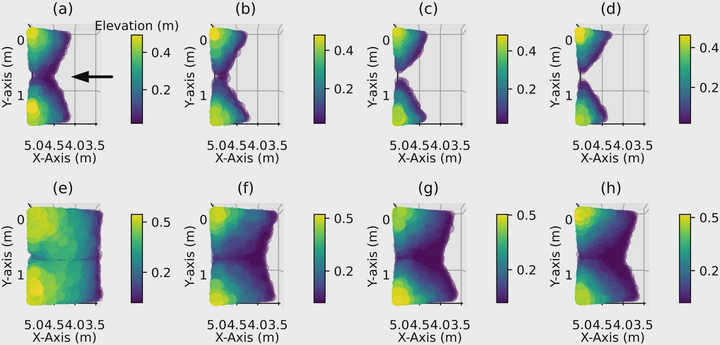Dynamics of granular debris flows against slit dams based on the CFD–DEM method: effect of grain size distribution and ambient environments

Abstract: Earth surface flows in nature, like debris flows and rock avalanches, have threatened people’s safety and infrastructure during past decades. Though grain size distribution (GSD) has been acknowledged as a crucial characteristic in granular material behaviour, its coupled effects associated with environments on engineering structures such as the slit dam remain unclear. To bridge the gap, this paper reveals the coupled effect of the GSD and ambient environments (i.e. slope angles and saturation conditions) on avalanche/debris flows’ impact on the slit dam using a Computational Fluid Dynamics/Discrete Element Method (CFD–DEM) model. To describe strain-dependent rheological characteristics of debris fluids, the Herschel–Bulkley–Papanastasiou model is implemented in the finite volume method framework. A power grain size distribution law is considered to quantify GSDs, in which a fractal parameter takes charge of GSD types. After model verification with experimental/theoretical results, the impact force against slit dams, granular dynamics and final deposit patterns under a series of ambient circumstances are presented. Taking advantage of the CFD–DEM method, the impact force and kinetic energy induced by fluid and solid phases are discriminated. The contribution of solid and fluid phases to both impact force and dynamics appears to be dependent on GSDs. Accordingly, compared with saturated avalanche flows (i.e. debris flows), slit dams result in higher retaining efficiency when confronted with dry avalanche flows. Regarding a narrow diameter range used in analyses, the grain diameter ratio is then enlarged up to eight to reveal the potential size effect. As for the coupled role of GSDs and slope angles, in contrast to slope angles, the influence of GSD on avalanche flow interaction with slit dams is much smaller. Additionally, provided a narrow diameter range, the effect of GSDs on impact force can be partially attributed to the change in average grain diameter. After presenting the significance of ambience and GSDs to avalanche/debris flows, a series of parametric studies around the effect of fluid grid size, particle shape and the initial porosity of granular samples are discussed, aiming to advance the understanding of their influence in the interactions between debris flows and the slit dam.